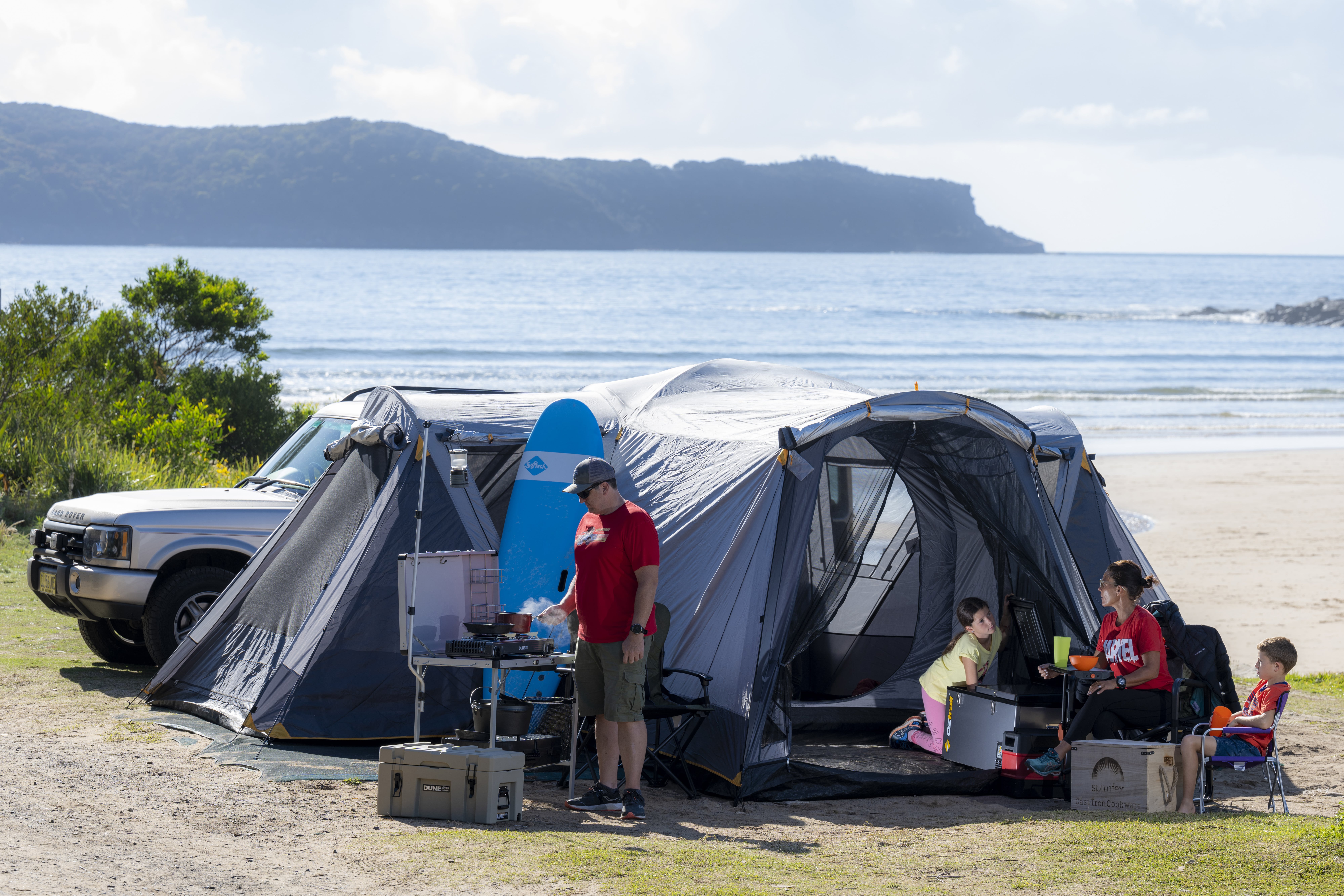Packing the car, loading up all the camping gear and the kids, and then heading off to explore this awesome country of ours is why camping is so incredibly popular in Australia. And, the best thing is, once you have a few essentials, you can start getting out there. Here are seven must-haves to ensure every single camping trip with the family is a memorable and fun one!
01. The tent
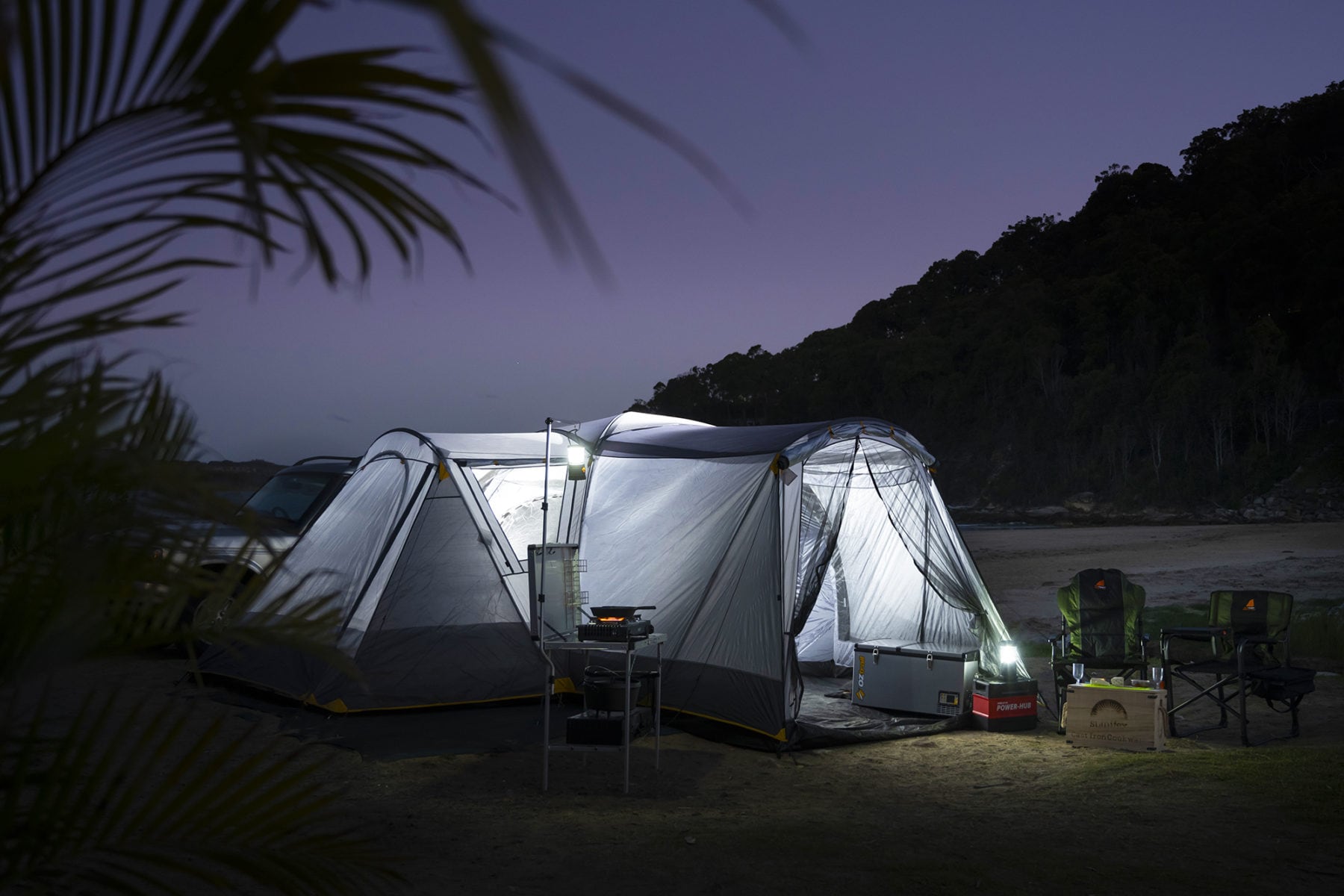
There’s no single perfect solution to road-trip accommodation – there are so many variables affecting your choice; destination, numbers camping (family or single/double), available cargo space and personal wants and needs all play a part – but for the best bang for your bucks, it’s hard to beat a family tent.
In terms of size, we’d advise opting for a tent that, at the least, offers an additional couple of ‘persons’ in its capacity rating, and preferably more. By the time you add in sleeping gear (more on that, below), each individual’s luggage, a couple of smaller packs/bags and – most importantly – either an Esky or a portable fridge, you’re soon feeling pretty crowded. And if it rains…
The wet stuff brings up another must-have in terms of size: at least one, preferably two vestibules (covered areas of the tent that provide shelter and airflow even when it is raining). This allows you and the clan to sit out any miserable weather and not be on top of each other while doing so. It also means you can keep your camp chairs (and even a camp table if the tent is large enough) under cover if raining as well. Also check there are plenty of windows (with insect mesh) in the tent to ensure plenty of ventilation. And the last note on ‘big’: make sure the family tent you choose has a high enough ceiling, so adults aren’t walking around stooped over. You’ll soon get sick of that…
Tents are made using either synthetic (nylon or polyester) or natural (cotton canvas) materials, with the former offering a lower weight per square metre, meaning even a 12-person tent, such as the OzTrail Genesis Apex 12P, will pack down relatively compact – for its huge capacity. Plus, the days of synthetic material tents not being as ‘tough’ as canvas are long gone, with most quality models featuring tear-resistant technology (also known as ripstop) and a number of different treatments to ensure durability and UV-resistance. In short, with care, they should last years.
If your storage space is limited in your vehicle, we’d definitely go for a synthetic tent. You will get a lot more bang for your bucks in terms of size, space and features, than the equivalent capacity canvas tent. As mentioned above as an example, the Oztrail Genesis Apex 12P is very spacious, but when packed in its storage bag is not as big as you’d think.
02. The sleeping bag

A sleeping bag is one of the most important pieces of camping gear. They provide shelter, warmth and comfort, so buying the right one is paramount.
Sleeping bag choice will be heavily influenced by how your body works; whichever one does the best job of keeping you warm and comfortable will be the bag you need. For most Australian conditions, a bag rated as three-season, such as the Mountain Designs Travelite 300, is the best all-round option. However, because individuals’ bodies are all different – some people are ‘cold’ sleepers; others are happy in sub-zero temps – test as many bags as you can to achieve the best ‘fit’.
Whether to opt for a down-fill bag (usually goose-down, sometimes duck-down) or a synthetic-fill bag is the main decision you will need to make. There are pros and cons to both.
Down has a great warmth to weight ratio and is more compressible, plus it is more odour-resistant. Get it wet, though, and it offers no warmth at all (there are expensive water-resistant down bags on the market). Final negative: down-fill bags cost more.
Synthetic-fill sleeping bags are cheaper, can offer the same warming capability (but will be heavier for it) and will retain some warmth even when wet.
Sleeping bag shape (or style) plays a role in bag selection, too. For the best warmth retention capabilities, a mummy-cut bag is best as its compact shape means minimal ‘spare air’ for your body to warm up. However, they can be restrictive for restless sleepers. Rectangular bags are the exact opposite: there’s loads of room inside, with the result being that your body has to work twice as hard to warm up all that vacant space. Semi-rectangular, or relaxed-mummy bags are the ideal compromise for those who don’t want to be overly constricted or spend the whole night trying to stay warm in a voluminous bag.
03. The bed

Inflatable sleeping mats are the go for any type of camping, These are either self-inflating, or you have to pump them up manually (i.e., your lungs). Either is great – and both are comfortable. Mats for vehicle camping generally have a nice tall mattress (50mm to 100mm) and a softer material layer on the top surface. Some car-camping mats are powered, either by battery or mains power, making inflation a very easy task.
We’d highly recommend purchasing a mid-priced mat at the least; cheap budget models don’t hold their shape and fail quite easily due to fragile construction; there’s nothing worse than sleeping on the ground for a few days. The other negative of these budget jobbies is that your body weight tends to push the air around the mat so you end up with an over-inflated lower part of your mat, while your body is barely supported because your weight has pushed all the air lower down – it nearly makes you seasick!
This does not mean you have to pay a fortune for a sleeping mat: buying from a well-regarded brand is the safest bet and most of these brands have a wide range of models at reasonable price ranges. For most Aussie conditions, something like a Dune 4WD Mat is perfect, with its 100mm-thick mattress offering plenty of comfort.
04. The kitchen
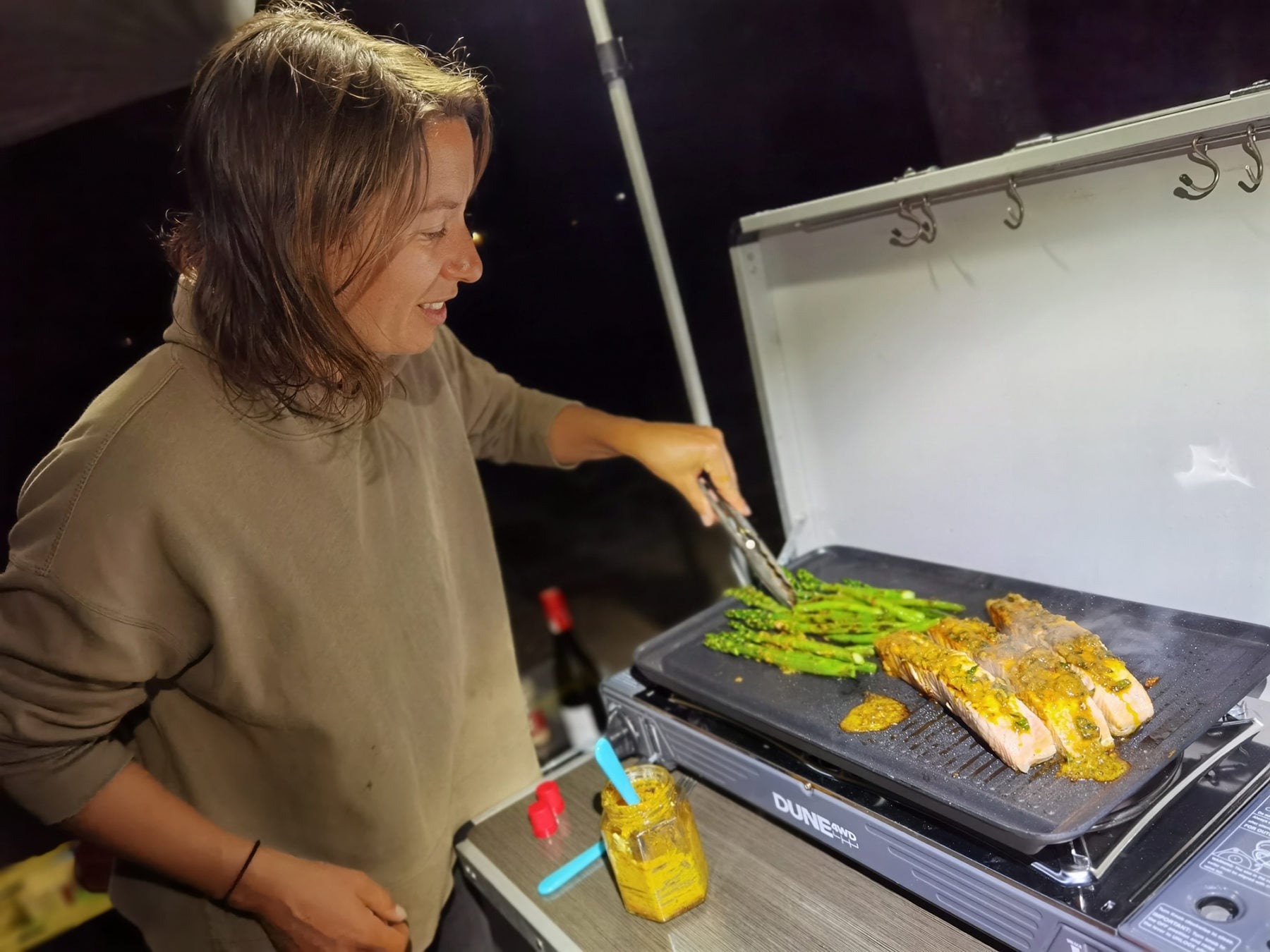
We reckon the single- and double-burner butane stoves are brilliant for family camping. With features such as a convenient disposable butane cartridge, Piezo ignition and a compact plastic carry case for easy transportation, they are easy to use and transport, and are available just about anywhere – as are refill canisters. Having said that, we’d highly recommend purchasing from a camping specialist outlet, such as Anaconda, either in-store or online.
These stoves also offer excellent simmer/boil control, allowing the camp chef to create any type of meal with a bit of time and patience. Models to look for should ideally have enough space between burners to allow for medium sized pots/pans; there’s nothing worse than a ‘two-burner’ model that, really, can only fit one decent-sized pan/pot on it. This is why we highly recommend a reputable brand stove, with models from Dune 4WD, Spinifex and Coleman all worth a look.
05. Food storage
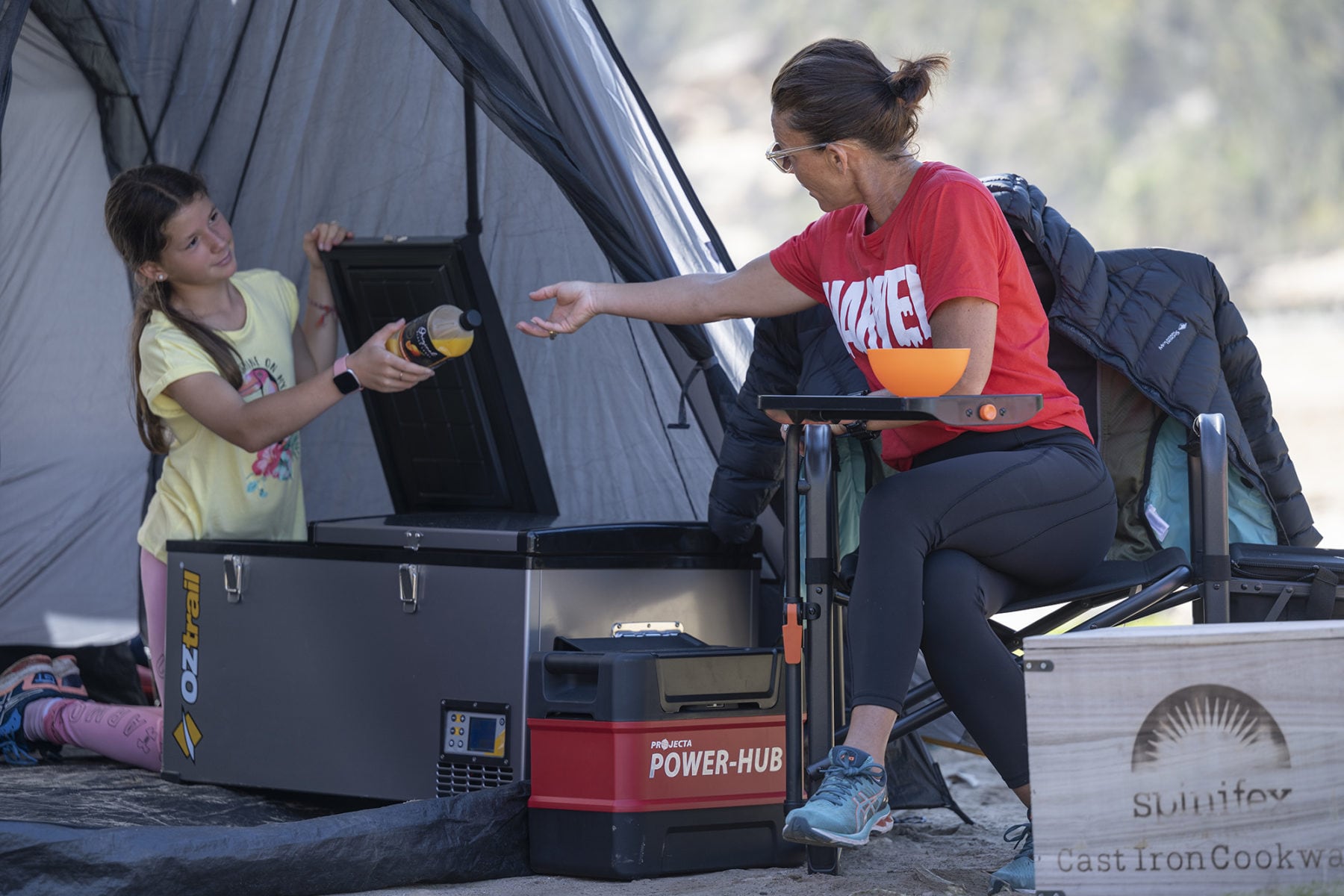
To keep food stored fresh when camping, there are two choices: the Esky packed with ice, or – if you have the space – a portable fridge/freezer. The Esky is ideal for weekend camping trips and at locations where you can get a quick resupply of ice if need be. For anything longer than that, your best bet is a portable fridge/freezer. This does, however, mean either buying a power-pack to run it or, in the case of a 4WD, perhaps fitting a dual-battery system (the second battery runs all your accessories), otherwise running a fridge/freezer straight from your car’s only battery will flatten it within a day or so. There are a number of brands that offer fridge/freezers in a variety of sizes and configurations, with some offering two separate compartments, allowing the unit to run as both a fridge and a freezer. The Oztrail 80L Dual Zone is an example of this fridge/freezer type. With a huge range of sizes, there will definitely be one to fit your vehicle, whether it is a hatchback or a large 4WD wagon or ute. There are also, now, a number of excellent power-pack options on the market, with brands such as Projecta offering fully featured units that will charge your fridge/freezer and lighting, for days on end. These can be recharged at a powered campsite or you can recharge them off portable solar panels. Solar panels (foldable or solid) are cheaper each year and brilliant when camping.
06. Lights for camping
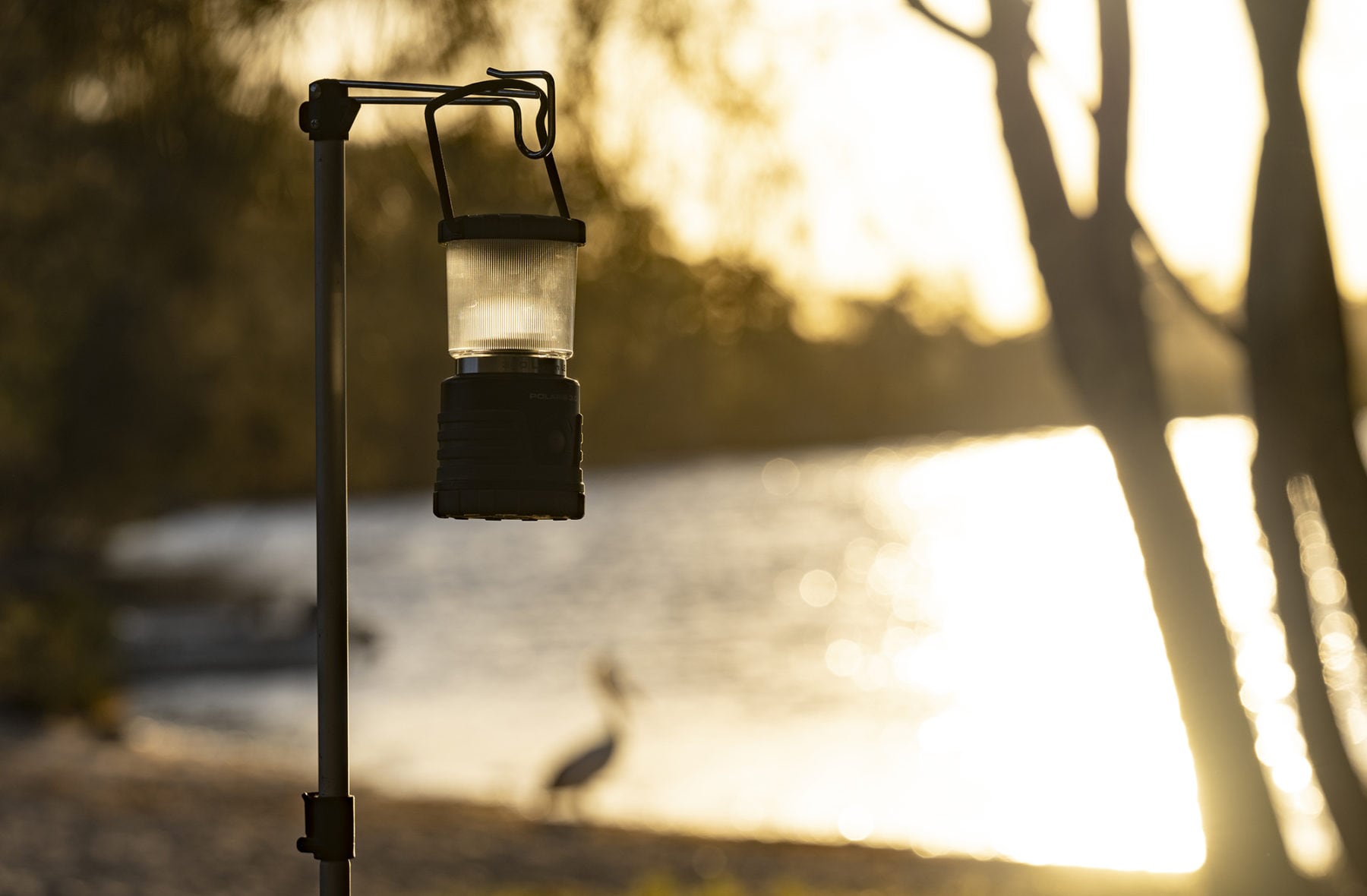
Gas, fluoro and LED – you’ll find all three of these lighting types at campsites around Australia. Currently, lighting technology is focused on bang for your buck in regard to how much “throw” (how much area coverage the light has) a particular lighting system possesses.
Historically, gas lights have been the best illuminators, but they are also the least energy-efficient due to the amount of heat they give off (heat loss from a light is wasted energy) when compared to “cooler” lighting technologies, such as fluorescent and LED (Light Emitting Diode). In terms of hi-tech developments, it is mostly in LED lighting, as manufacturers try and simplify the complex construction process of LED lighting (to reduce consumer costs) while also figuring out how to boost the LEDs’ wide-area lighting capacity, its main disadvantage compared to gas and fluoro lights. LED lighting still lags behind the other two lighting options when it comes to amount of light thrown but, with its many positives – it can be made into strips of any length, or clusters; a low power draw – LED lighting continues to see plenty of hi-tech investment from manufacturers, which is a win-win for campers, with some cool camp lanterns and lights on the market. The negatives are few but include the fact that LEDs require battery power, so you’ll still need spare batteries or charging facilities for longer trips (lucky you have that power-pack, hey?).
The other option, of course, is packing a few head-torches. Primarily LED-based, these diminutive light sources send out some serious illumination. Being head-mounted and thus directional, a head-torch is our favourite camp lighting option – we always have four of them stored permanently in our vehicle.
07. Gear transport
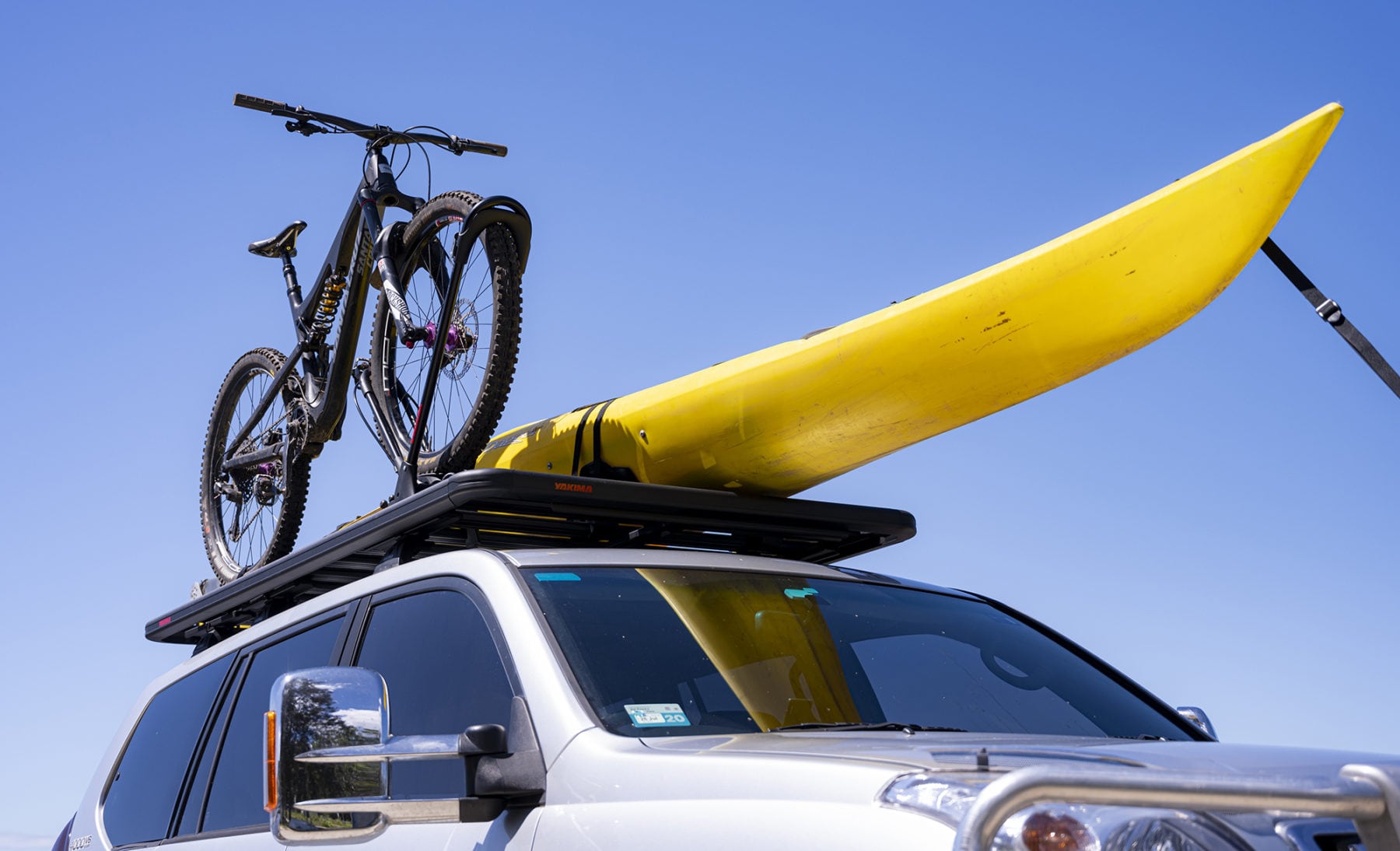
When you head out camping you’re often going somewhere to do something and that invariably means bringing some ‘toys’, as well as your essential camping gear (tent, sleeping gear, chairs/tables, camp kitchen, etc.). To pack everything in without exceeding the legal Gross Vehicle Mass (GVM) figure of your car (the total weight of your vehicle and everything in/on it a vehicle is legally permitted to carry) you need a plan.
The key to a stress-free and fun family camping trip is to keep it simple. By that I mean not only in what you want to do when you’re away, but also in what you take along with you, and the extras you will need that might be specific to where you will be camping. You also need to be aware of the expected weather conditions (always a toughie to pick).
It is with the essentials you can save the most space – and load weight in your vehicle. A family-sized tent no longer has to be a heavy, bulky thing that takes two adults to lift on to the roof racks or to unpack/pack, and the same goes for cooking equipment and bedding.
Another great option for lugging all your camping gear is hard-shell storage case, such as the Dune 4WD storage box range. These are sealed against water and dust ingress, have strong handle, are available in a number of sizes and make great camp seats, too. You can sort them into a system wherein one case is for cooking gear, another for diving gear, for example. They can also be stacked up on top of each other for easier transport (please always – and we mean always – secure any luggage in your vehicle before travelling).
With a huge variety of roof rack and tow hitch-based carrying systems on the market, it is now second-nature to load up the bicycles, kayaks or canoes to add another dimension to your family’s camping trip. There are roof-based carrying systems for all vehicle types, whether small hatchbacks or serious outback-ready 4WDs – and for all activities, such as paddling, cycling, etc. Brands such as Yakima offer a number of systems designed to carry all these types of toys that are easily attached to your roof-racks or your towball/hitch. We currently drive a compact SUV and utilise a Yakima hitch-mount bike carrier and roof-mounted luggage pod on a regular basis for camping – they work perfectly.
Camping: The final word
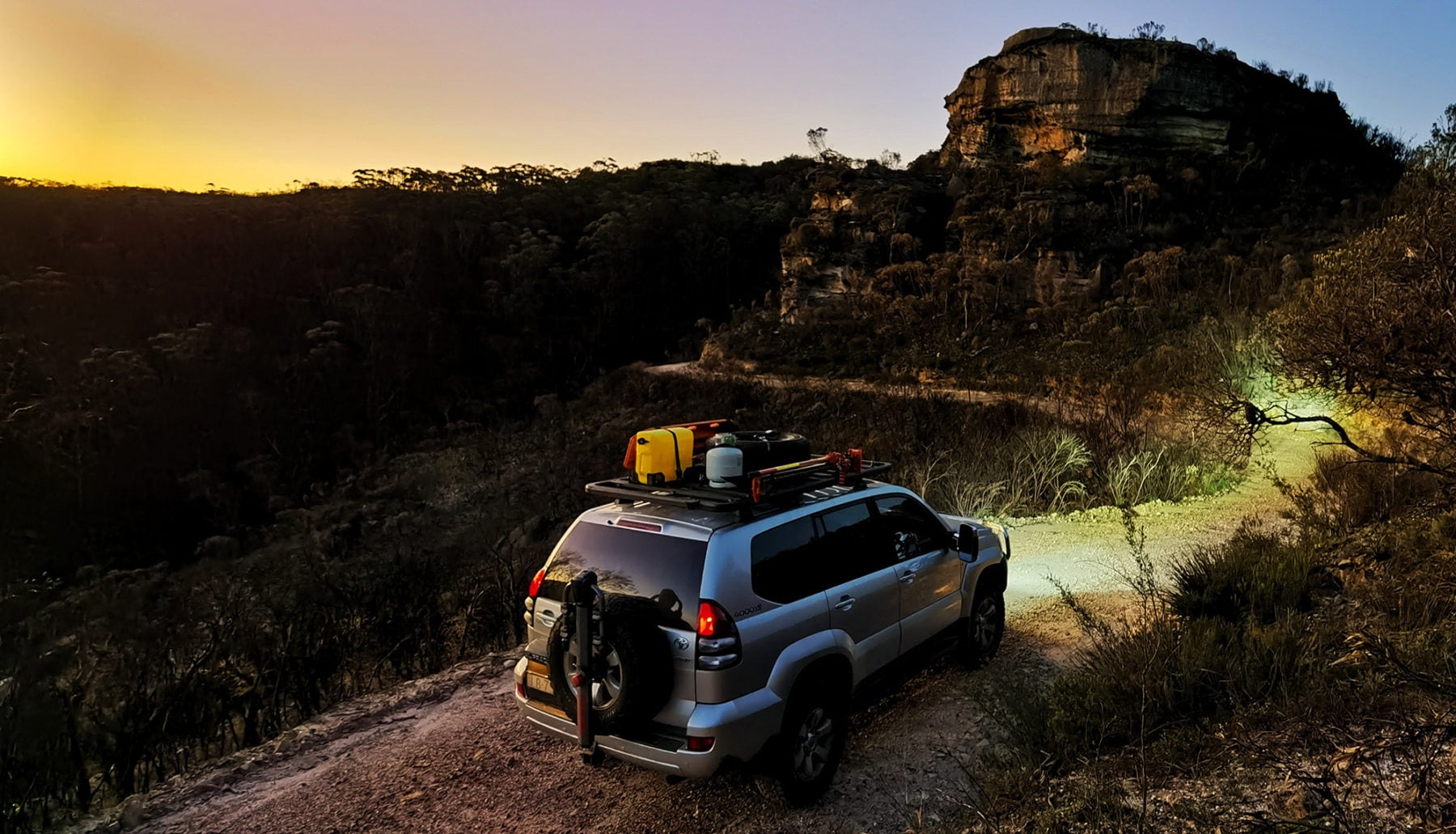
Getting started in camping seems like a daunting task when you start seeing all the gear you may need. But, thankfully, it’s not. In fact, we reckon wandering through a huge Anaconda store, checking out all the cool gear, is more than half the fun. But even that fun pales in comparison to actually getting out there and doing it – and you can see exactly how that well-researched purchase works in the environment it’s designed for. More importantly, you can also see exactly how much enjoyment and enrichment you and your family get from experiencing all the Aussie outdoors has to offer. That’s a definite win, we reckon!
